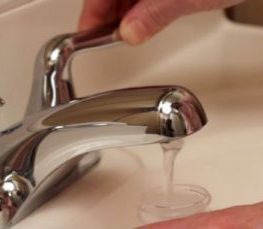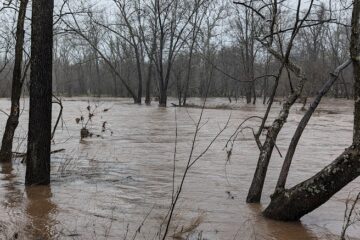 For starters, it would mean no morning shower, no coffee or tea, no brushing your teeth, no washing laundry or dishes, no flushing the toilet, no watering your plants or garden, no cooking most recipes. It would mean terrible thirst and the inability to perform strenuous physical work or exercise.
For starters, it would mean no morning shower, no coffee or tea, no brushing your teeth, no washing laundry or dishes, no flushing the toilet, no watering your plants or garden, no cooking most recipes. It would mean terrible thirst and the inability to perform strenuous physical work or exercise.
A day without water would bring most businesses and public services screeching to a halt. You can’t run a school or a hotel or a factory without water. Water is essential for agriculture, manufacturing, energy production, transportation and more.
Oct. 12 is “Imagine a Day Without Water” day, sponsored by the U.S. Water Alliance. The Alliance’s Value of Water campaign is meant to draw public attention to our reliance on clean, abundant water – and the critical infrastructure to bring it to our homes and businesses.
“This national day of action educates our neighbors and public officials about the essential role water plays in all of our lives, and the threat that aging and underfunded water infrastructure poses to our communities and economy,” explained Radhika Fox, CEO of the U.S. Water Alliance and Director of the Value of Water Campaign.
“It is easy to take our water infrastructure for granted because it is often underground and out of sight,” Fox added. “But the systems that deliver water to and from our homes and businesses require reinvestment and upkeep, just like roads and bridges. It is time to take action before we face a crisis.”
Can you imagine a day without water? Just one day? If you’re like most people, even going 24 hours without water is nearly unthinkable.
According to the Alliance, water infrastructure in the United States is aging and in need of investment, having gone underfunded for decades. Drought, flooding, and climate change are stressing water and wastewater systems. A single nationwide day without water service would put $43.5 billion of economic activity at risk.
Here in the watershed of the North and South Branches of the Raritan River, aging water infrastructure problems are less acute because the majority of homes get water from private wells instead of a public water supply. The most serious infrastructure threat to clean water tends to come from old, failing septic systems near wells.
Wells are also subject to the electrical power infrastructure. When power goes out for extended periods – as it did in many places in New Jersey after Superstorm Sandy in 2012 – homes with electric well pumps are left without running water.
According to the Alliance, most Americans want the federal government to prioritize investing in infrastructure. Earlier this year, voters were polled on what they wanted the federal government to focus on for a legislative agenda. Two-thirds said investment in infrastructure was the most important priority. Eighty-two percent said water infrastructure should top the list.
“Clean water is essential to life,” said Cindy Ehrenclou, executive director of Raritan Headwaters. “We need to protect clean water in our rivers, streams and underground – and protect our access to water by maintaining infrastructure.”
Some facts about water:
- The average American uses 176 gallons of water per day—or 64,240 gallons a year. That’s enough to fill a 20-by-40-foot swimming pool!
- In the average home, 17 percent of water is used for showering, 27 percent is flushed by toilets, 15 percent comes out of faucets, 22 percent is used by the clothes washer, and 5 percent goes toward miscellaneous needs. This may surprise you, but leaks steal 14 percent!
- Household use is just a small part of our total water consumption. Of the 349 billion gallons of freshwater drawn each day in the United States, 41 percent is used to produce electric power and 37 percent is used for crop irrigation.
- It takes an estimated 19 gallons of water to grow one apple, 32 to produce one glass on wine and 1,230 to yield one beef steak.



